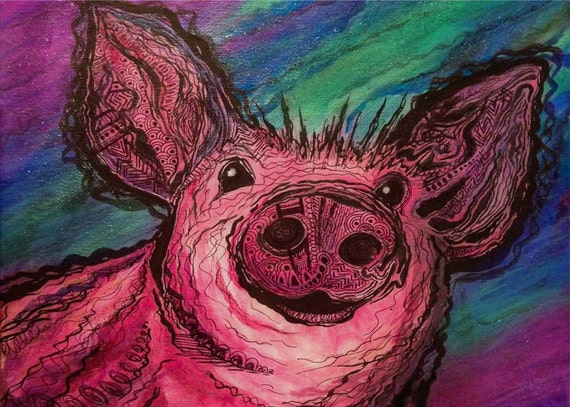- Welcome to Cook'd and Bomb'd.
-
 Football Thread 23-24: Part...
by BlodwynPig
Football Thread 23-24: Part...
by BlodwynPig
[Today at 09:51:34 PM] -
 Favourite moviegoing experiences...
by kalowski
Favourite moviegoing experiences...
by kalowski
[Today at 09:51:17 PM] -
 Mountain Mumble
by touchingcloth
Mountain Mumble
by touchingcloth
[Today at 09:50:58 PM] -
 Swimming
by lauraxsynthesis
Swimming
by lauraxsynthesis
[Today at 09:50:43 PM] -
 Is Cancel Culture Over?
by ajsmith2
Is Cancel Culture Over?
by ajsmith2
[Today at 09:49:31 PM] -
 UB40
by wrec
UB40
by wrec
[Today at 09:48:13 PM] -
 Do you have Disney +
by paddy72
Do you have Disney +
by paddy72
[Today at 09:46:41 PM] -
 Comedy That's Changed Your...
by Snrub
Comedy That's Changed Your...
by Snrub
[Today at 09:46:15 PM] -
 American words/phrases you...
by OpenMikeKnight
American words/phrases you...
by OpenMikeKnight
[Today at 09:45:28 PM] -
 Doctor Who - Series 14, part...
by Midas
Doctor Who - Series 14, part...
by Midas
[Today at 09:41:55 PM]
Members
 Total Members: 17,827
Total Members: 17,827 Latest: skinnylike
Latest: skinnylike
Stats
 Total Posts: 5,583,170
Total Posts: 5,583,170 Total Topics: 106,735
Total Topics: 106,735 Online Today: 910
Online Today: 910 Online Ever: 3,311
Online Ever: 3,311- (July 08, 2021, 03:14:41 AM)
Users Online
 Users: 148
Users: 148 Guests: 527
Guests: 527 Total: 675
Total: 675 dinglebonce
dinglebonce drummersaredeaf
drummersaredeaf CrackerFactory
CrackerFactory paddy72
paddy72 Better Midlands
Better Midlands BlodwynPig
BlodwynPig Mister Six
Mister Six DrGreggles
DrGreggles JimminyJillikers
JimminyJillikers johnnyhandsome
johnnyhandsome Fifteen Milky Ways
Fifteen Milky Ways FredNurke
FredNurke bollocks
bollocks Pavlov`s Dog`s Dad`s Dead
Pavlov`s Dog`s Dad`s Dead squidn.t
squidn.t Lieutenant Longstay
Lieutenant Longstay Arbiter
Arbiter jobotic
jobotic persephone
persephone Adey
Adey Glebe
Glebe Registering to lurk
Registering to lurk Snrub
Snrub iamcoop
iamcoop RHX
RHX Huxwell
Huxwell ros vulgaris
ros vulgaris DL
DL Johnny Textface
Johnny Textface LordMorgan
LordMorgan Deskbound Cunt
Deskbound Cunt machotrouts
machotrouts Auntie Beryl
Auntie Beryl Midas
Midas Good Hank
Good Hank ajsmith2
ajsmith2 Bobloblawslawbomb
Bobloblawslawbomb Armin Meiwes
Armin Meiwes lankyguy95
lankyguy95 Percy Dovetonsils
Percy Dovetonsils thenoise
thenoise Butchers Blind
Butchers Blind Tikwid
Tikwid daf
daf RDRR
RDRR Marner and Me
Marner and Me Theotherside
Theotherside Mr Balowski
Mr Balowski Found Wound Round
Found Wound Round Goldentony
Goldentony C_Larence
C_Larence Jerrykeshton
Jerrykeshton buttgammon
buttgammon druss
druss Kankurette
Kankurette gmoney
gmoney Mobius
Mobius Bleeding Kansas
Bleeding Kansas Stone Cold Steve Austin
Stone Cold Steve Austin PlanktonSideburns
PlanktonSideburns RicoMNKN
RicoMNKN Hundhoon
Hundhoon Old Thrashbarg
Old Thrashbarg Pelvis Costello
Pelvis Costello Pseudopath
Pseudopath Gurke and Hare
Gurke and Hare Chairman Yang
Chairman Yang OpenMikeKnight
OpenMikeKnight Poobum
Poobum Gambrinus
Gambrinus shoulders
shoulders Speak
Speak Tombola
Tombola Underturd
Underturd Huxleys Babkins
Huxleys Babkins Loukides
Loukides JesusAndYourBush
JesusAndYourBush thevoola
thevoola Fabian Thomsett
Fabian Thomsett Langdale
Langdale wobinidan
wobinidan Tread
Tread mikeyg27
mikeyg27 Jockice
Jockice WhoMe
WhoMe Nice Relaxing Poo
Nice Relaxing Poo Bingo Fury
Bingo Fury TheDevilPuppet
TheDevilPuppet mrsleepy321
mrsleepy321 jazzy_sabotage
jazzy_sabotage Asclepius
Asclepius MrMealDeal
MrMealDeal Elderly Sumo Prophecy
Elderly Sumo Prophecy Utter Shit
Utter Shit Stoneage Dinosaurs
Stoneage Dinosaurs Small Man Big Horse
Small Man Big Horse Zonkedzebra
Zonkedzebra Cuntbeaks
Cuntbeaks Blumf
Blumf ElTwopo
ElTwopo bigfatheart
bigfatheart mr. logic
mr. logic Thursday
Thursday ropeadope
ropeadope Bobby Spatchcock
Bobby Spatchcock Pinball
Pinball Bellalunaesme2
Bellalunaesme2 Prax150
Prax150 Juan K Perros
Juan K Perros Mirr0rs
Mirr0rs twosclues
twosclues HDDslp
HDDslp Whug Baspin
Whug Baspin dontrunyoullfall
dontrunyoullfall Lemming
Lemming pancreas
pancreas perplexingprocrastinator
perplexingprocrastinator
